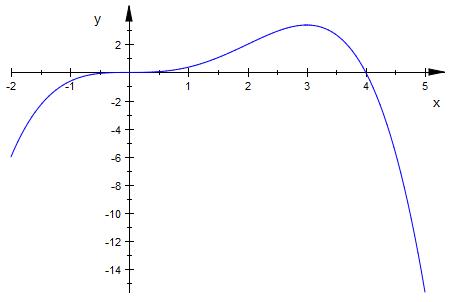f ( x ) =-(x4/8) + (x3/2)
f ´( x ) = - 1/2 * x^3 + 3/2 * x^2
f ´´( x ) = - 3/2 * x^2 + 3 * x
Stellen mit waagerechter Tangente
- 1/2 * x^3 + 3/2 * x^2 = 0
x^2 * ( -1/2 * x + 3/2 ) = 0
x = 0
-1/2 * x + 3/2 = 0
x = 3
f ´´( x ) = - 3/2 * x^2 + 3 * x
f ´´( 3 ) = - 3/2 * 3^2 + 3 * 3 = -9/2
( 3 | -9/2 ) Hochpunkt
f ´´( x ) = - 3/2 * x^2 + 3 * x
f ´´( 0 ) = - 3/2 * 0^2 + 3 * 0 = 0
Nichts genaues weiß man noch nicht.
Monotonie > 0
f ´( x ) = - 1/2 * x^3 + 3/2 * x^2 > 0
- 1/2 * x^3 > -3/2 * x^2 | : x^2
( für x ≠ 0 ; x^2 ist stets > 0 )
- 1/2 * x > -3/2 | * -2
x < 3
Für x < 3 ist die Funktion steigend.
bei x = 0 also auch.
Links und rechts davon auch.
Die Stelle x = 0 ist ein Sattelpunkt.
( 0 | 0 ) Sattelpunkt.
